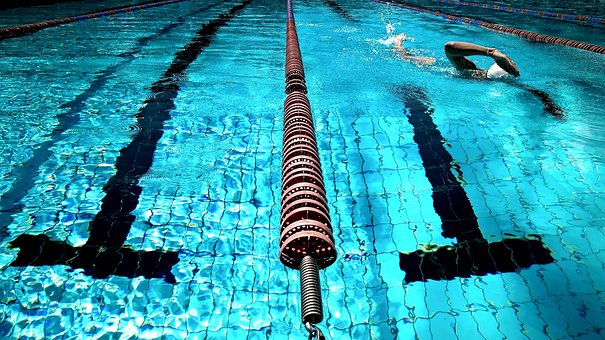Controlling Blood Sugar Spikes With Diet, Exercise
If you have diabetes, you are aware that your general blood sugar levels (also referred to as glucose) demonstrate how well you have your disease under control. If you have heard glucose referred to in other contexts, this may be confusing. Your risk of health issues such as kidney disease and eyesight loss is reduced when your level is maintained at a normal and consistent level. Not only will you be able to get your blood sugar level under control, but you will also lower your risk of having a heart attack or stroke. Additionally, you’ll find that you have greater energy.
Your blood sugar can be brought back into equilibrium with medication. However, the things you eat and the amount of physical activity you get also make a difference.
Diet
Get into a routine. If you eat an excessive amount in one sitting, it could cause your blood sugar to spike. If, on the other hand, you don’t eat enough food or consume less carbohydrates than usual, this can cause your blood glucose level to decline, particularly if you take certain medications for diabetes. If you eat at the same time every day, you might find it simpler to control the amount of sugar in your blood. Have a discussion about a diet that is appropriate for you with your family physician. Once you’ve got it figured out, be consistent with it.
Make a list of your food. Consuming carbohydrates causes a rise in blood sugar levels. The glycemic index (GI) of a food indicates how rapidly this process can take place. If the number is larger, then the rate at which your glucose levels will rise will be quicker. Pretzels, white rice, and white bread are all examples of processed foods that tend to have a high glycemic index. Choose foods that have a low glycemic index, such as:
- Dried beans and legumes.
- Oatmeal
- Fruit
- Veggies that do not contain starch, such as spinach, carrots, lettuce, tomatoes, and sweet potatoes.
If you are going to consume food that is high on the GI index, make sure you pair it with side dishes that are low in GI. Your blood sugar levels may remain more stable as a result of this.
Watch your carb intake. If you use insulin, you could find that this task is simpler for you to complete. At each meal, you will calculate the overall number of carbohydrates consumed and then modify your insulin dosage accordingly. Keep a food journal for a few days to keep track of everything you eat and monitor your blood sugar level two hours after each meal. You’ll gain a better understanding of how the effects of various meals vary on you.
Improve your intake of fiber. Your body is unable to break it down, and as a result, it has no impact on your blood sugar levels. (Despite the fact that many foods high in fiber also contain sugars and carbs that contribute to weight gain), Consuming 25–30 grams of fiber on a daily basis, such as that which is found in oatmeal, may assist you in better controlling your blood sugar levels. However, gradually bring yourself up to this level. Also, make sure you consume plenty of water to prevent yourself from becoming constipated.
Always have a bottle of water on hand. Your blood sugar levels can be severely disrupted if you do not consume sufficient fluids throughout the day. If you want to quench your thirst, water is a better option than juice or soda. Don’t like the taste? Pick teas that don’t have any added sugar.

Snack smarter. The caloric, salt, and added sugar content of sodas and packaged foods are typically high, whereas the vitamin and mineral content is typically low. Eat something nutritious like grapes or carrots in between meals if you find that you are getting hungry in between meals.
Take careful, measured bites throughout meals and snacks. In order to keep your blood sugar under control, pay attention to the portions of food you consume. At home, you should employ the use of measuring cups and a food scale. Check the serving sizes that are mentioned on the labels of the nutrition information.
There are some straightforward approaches you can take to form an image in your head of the appropriate portion size. One portion of meat, for instance, is around the size of your palm. The size of your fist is equivalent to a cup of salad or a dish.
Exercise
Make it a regular part of your schedule. Your body will become more insulin-receptive if you engage in physical activity. This helps maintain a consistent level of sugar in your blood. After receiving clearance from your physician, you should engage in an aerobic activity that gets your heart rate up, such as walking, dancing, swimming, or biking. Your goal should be to exercise for a total of half an hour, five times each week. However, even just five minutes is an excellent place to start. The level of intensity of your activities should be at least “moderately intensive,” which indicates that you should be able to talk but not sing while you engage in them.

When you are ready, add resistance training to your workout routine. This helps to build your muscles, which is beneficial because that is where most of your blood glucose is kept. Hand weights or resistance bands should be used at the gym or at home on a twice-weekly basis. You can also gain strength by using your own body weight in exercises such as pushups and squats, both of which are terrific choices.
Pick the “right” time to get your heart rate up and start sweating. Some people find that starting their day with exercise helps maintain their blood sugar levels stable throughout the day. Having said that, it’s possible it doesn’t apply to you. It’s possible that you won’t be able to find a routine that helps you maintain a healthy blood sugar level until you experiment with working out at several different times throughout the day. Even once you do, be safe. If you take insulin, you should make it a habit to keep glucose tablets or an emergency snack with you at all times. If you have any concerns or queries, you should consult your physician.
Fight the post-meal crash. After a meal, doing some light exercise for ten to fifteen minutes, such as walking, can prevent your blood sugar from becoming too high. Your muscles, as opposed to your stomach, receive a greater proportion of the blood supply. This indicates that you have improved sugar absorption. After you have finished eating, rather than turning on the television, you should clear the kitchen table, wash the dishes, or go for a walk around the neighborhood.
Pay attention to your bodily cues. The effects of exercise on blood sugar might last anywhere from 24 to 48 hours. Because of this, you should monitor your glucose levels after every workout that you do. It will assist you in being more attuned to how your body responds when you engage in physical activity. It’s possible that you’ll start to recognize other trends that can assist you in maintaining better control of your blood sugar.
Make exercising fun. If you find a workout that you enjoy doing, you will be more likely to continue being physically active. Alternate between a few different things so that you are not stuck doing the same thing over and over again. This allows you to engage different muscles and reduces the risk of damage at the same time. Asking a friend to join you in your workouts will provide you with additional motivation.
Also, remember to keep some water close at hand and to drink it regularly. Water has the ability to make you feel full, despite the fact that it contains no calories.
Take some time to reflect on each of your recent accomplishments. Making adjustments to one’s way of life can be challenging; as a result, you have every reason to be proud of your accomplishments. The benefits of these adjustments will become apparent to you over time in the form of improvements to your health and well-being as a whole. If you are consistent with your new healthy behaviors, you will likely meet, and possibly even surpass, your first weight loss target over the course of some time.
